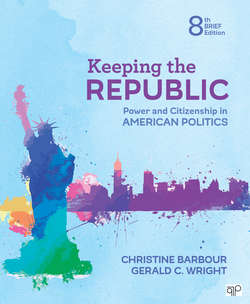Читать книгу Keeping the Republic - Christine Barbour - Страница 88
На сайте Литреса книга снята с продажи.
The Rules
ОглавлениеAs we saw, the Constitution establishes separation of powers with articles setting up a different institution for each branch of government. Checks and balances are provided by clauses within these articles:
Article I sets up a bicameral legislature. Because both houses must agree on all legislation, they can check each other. Article I also describes the presidential veto, with which the president can check Congress, and the override provision, by which two-thirds of Congress can check the president. Congress can also check abuses of the executive or judicial branch with impeachment.
Article II empowers the president to execute the laws and to share some legislative function by “recommending laws.” The president has some checks on the judiciary through the power to appoint judges, but this appointment power is checked by the requirement that a majority of the Senate must confirm the president’s choices. The president can also check the judiciary by granting pardons. The president is commander-in-chief of the armed forces, but the ability to exercise this authority is checked by the Article I provision that only Congress can declare war.Figure 2.1 Separation of Powers and Checks and Balances
Article III creates the Supreme Court. The Court’s ruling in the case of Marbury v. Madison fills in some of the gaps in this vague article by establishing judicial review, a true check on the legislative and executive branches. Congress can countercheck judicial review by amending the Constitution (with the help of the states).
The Constitution wisely ensures that no branch of the government can act independently of the others, yet none is wholly dependent on the others, either. This results in a structure of separation of powers and checks and balances that is distinctively American.
